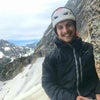Heading out the door? Read this article on the new Outside+ app available now on iOS devices for members! Download the app.
Camping is a mandatory part of climbing. Whether you’re tucked into El Cap Tower or on Denali’s Cassin Ledge, camping enables us to climb at the world-class areas beyond our local zones.
But camping—or bivouacs/bivys in climbing parlance—is a thoughtful and expensive game. A bad night’s sleep can kill your climbing performance the next day, but so will a cripplingly heavy backpack loaded with a thick duvet. That’s why the editors at Climbing follow a three-pronged approach when choosing any piece of camping gear: (1) Is it unnecessarily heavy? (2) Will it keep me warm and dry? (3) Is it worth the price tag?
Depending on your objective, your environment, and how much you prioritize sleep/are willing to suffer, one of these three prongs will hold more weight than the others. But we’d encourage you to strike a balance as much as you can: a heavy pack sucks, but so does a bad night’s sleep.
Below, find our editors’ favorite camping gear when we’re climbing far from the road.
Meet Our Lead Tester
Anthony Walsh
Anthony is a senior editor at Climbing and avoids sleeping in his bed as much as he can. Based in the Canadian Rockies, Anthony is within firing distance of many mountain ranges for his smash-n-grab weekend missions, including the Bugaboos, Rogers Pass, and the Icefields Parkway. He logged many nights bivied below (and on) routes for this article, in temps as low as -40.
If you buy through our links, we may earn an affiliate commission. This supports our mission to get more people active and outside. Learn more.
Section dividerTents
Black Diamond Firstlight 2P
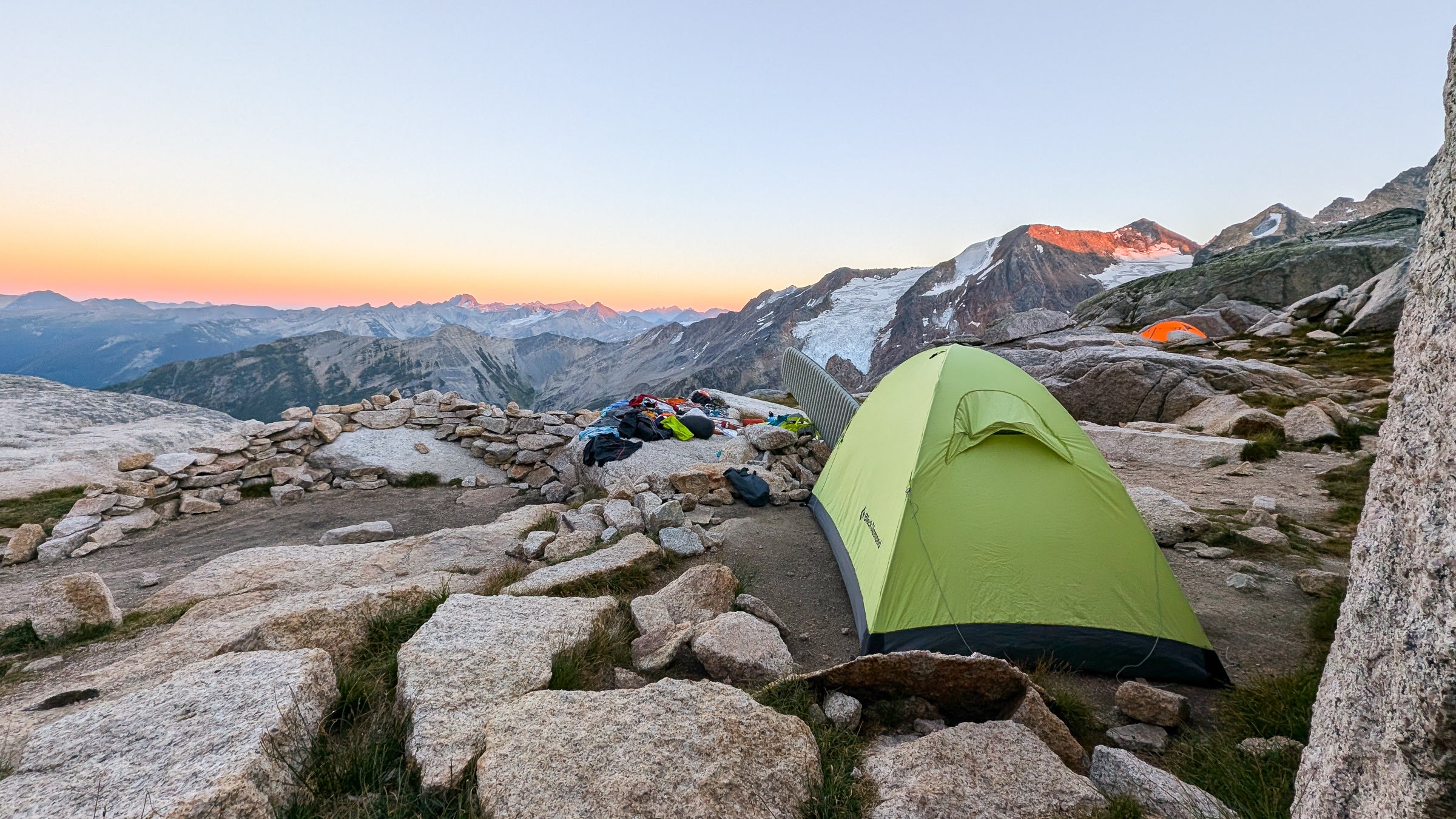
Basics
This is a lightweight (3lb 6oz/1,545g) four-season tent. It has steep walls to optimize headroom and two small inner mesh pockets to organize key gear like your headlamps and radio. The tent can be set up from the inside, using two equal-length poles, and the door and a rear window are covered in no-see-um mesh to provide a mosquito-proof source of cross ventilation.
Our thoughts
The Firstlight is a stalwart alpine-climbing tent, fit to withstand the harshest winds. One tester, while camped in the Bugaboos, weathered a brutal windstorm that ripped tied-down tents from their guy lines and sent ice axes pin-wheeling through space. After the storm passed and he emerged from his intact Firstlight, the tester noticed that of the 20-odd tents in camp, only a handful were still standing, and four of them were Firstlights.
There are many strong tents on the market (especially those included in this article) but the Firstlight remains popular for three solid reasons: it is strong, it is light, and, unlike other high-end tents, it is relatively inexpensive. What’s the catch? There is some assembly required with the Firstlight, namely the seams that you have to seal yourself, and, even then, the tent’s single-wall fabric is absolutely not waterproof. This is not typically an issue in dry alpine environments—and the tent can reasonably be called “water resistant”—but don’t expect this tent to keep you dry during a PNW rainstorm.
Buy for $450 on blackdiamond.com
Samaya Assaut2 Ultra

Basics
The Assaut2 Ultra is the lightest fully functioning climbing tent around, clocking in at just 2lb 3oz (980g). It is legitimately waterproof (20,000 mm in a water-column test), extremely breathable (40,000 g/m²/24h), and its Dyneema walls and floor make it one the strongest tents we’ve ever tested. Under the hood, the Assaut2 Ultra has two head-to-toe mesh side pockets and one ceiling pocket for gear organization. It also has a fully rated Blue Ice climbing sling embedded in the ceiling, allowing you to easily clip in at exposed bivies once you’ve secured the tent.
Our thoughts
The Assaut2 Ultra is realistically the highest-performing climbing tent on the market right now. It has a level of waterproofness that would make a fly fisher envious, and it is vastly more ventilating than this industry’s most high tech “waterproof breathables”—a real plus when you’re stuck in the tent for days and your partner’s mouth-breathing threatens to steam you out. Not to mention the tent’s robust face fabric is made of Dyneema, which is also hydrophobic, and is famously 15 times stronger than steel, gram for gram. For such a light tent we found the interior to be surprisingly livable, owing to the three generously sized mesh pockets and rated clip-in sling. A spacious vestibule, sold separately, adds four square feet of living space for just 14oz (405g).
Despite all these accolades, the Assaut2 Ultra is not a perfect tent. Its carbon poles are extremely light and narrow and can splinter or break if you are not careful while setting it up. And, compared to the First Light, the Assaut2 Ultra takes a bit finesse to assemble. The poles are threaded through narrow sleeves on the outside of the tent and can be a pain to set up in high winds, as we discovered at an exposed campsite in Patagonia’s Fitz Roy massif. Although the tent’s frame is undoubtedly stronger due to this design (the First Light’s poles are planted in an X inside the body and Velcroed in place) it is slightly more cumbersome, too.
Hyperlite Mountain Gear UltaMid 2

Basics
The UltaMid 2 is a 1lb 3oz (541g) floorless pyramid-shaped tent. Its walls are Dyneema, providing unmatched strength and weatherproof-ness, and its lofty ceiling is vented with no-see-um mesh. The floorless design allows you to leave task-specific items like tent poles at home, and erect the structure with your trekking poles or skis instead.
Our thoughts
Don’t let the UltaMid 2’s floorless design fool you into thinking it’s some weak, single-use structure—the folks at Hyperlite Mountain Gear are well known for their bomb-proof products and the pyramid tent is no exception. Our testers were seriously impressed with the UltaMid 2’s strength while waiting out a thunderstorm that pounded their glacier-bound camp. With just ski-strapped trekking poles propping up the shelter, the UltaMid 2 held fast—and shed the downpour with ease—allowing them to attack their alpine-rock objectives with high spirits later that day.
The UltaMid 2’s greatest asset is its versatility; an insert with mesh walls and a waterproof floor can be purchased separately, providing top-tier protection from mosquitoes and downpours alike.
As a result, the UltaMid 2 is equally at home in buggy, valley-bottom campsites and remote alpine glaciers—and everywhere in between.
Buy for $825 on hyperlitemountaingear.com
Nemo Chogori

Basics
The Nemo Chogori is a four-season tent that comes in both two- and three-person sizes. The Chogori’s big innovation is the built-in tent-fly—that is, the tent itself and the rainfly are not two component pieces but come pre-attached.
Our thoughts
The innovation of the integrated fly in the Chogori is a game-changer in terms of assembly. Combined with the external-pole structure, this makes set up lightning fast—and every minute saved can be crucial on wind-scoured glaciers. The two-person model could fit three people in a pinch, and its burly materials all add up to a good balance of weight, breathability, and durability, making the tent well suited for cold basecamps in Alaska, the Andes, or the Himalaya. The biggest drawback is related to its biggest asset: The built-in fly can be limiting in terms of portability, packability, repairs, and drying.
Buy for $750 on nemoequipment.com
Section dividerSleeping Pads
Sea To Summit Ether Light XT Extreme

Basics
The Sea To Summit Ether Light XT Extreme is a robust and incredibly warm (R-value of 6.2) sleeping pad designed for winter camping, climbing expeditions, and cold sleepers. The pad is constructed with a layer of Thermolite insulation and has four inches of loft.
Our thoughts
This is a worthy sleeping pad for climbing missions that prioritize warmth and a good night’s sleep over weight and packability. The pad isn’t a behemoth, to be sure; it packs down to a third of the size of a closed-cell foam pad, and much lighter than a car-camping one. However, compared to ultralight options (with admittedly lower R-values), there is a weight penalty for making this pad part of your luxurious snow-cave bivy. Regardless, the Ether Light XT Extreme’s warmth and four inches of comfort should not be hastily dismissed: for done-in-a-day climbs that require a bivy below the route, multiple days at the same camp, or even cold sleepers who crave crisp sending temps, this pad will deliver.
Buy for $219-$239 on seatosummit.com
Therm-a-Rest NeoAir XLite NXT
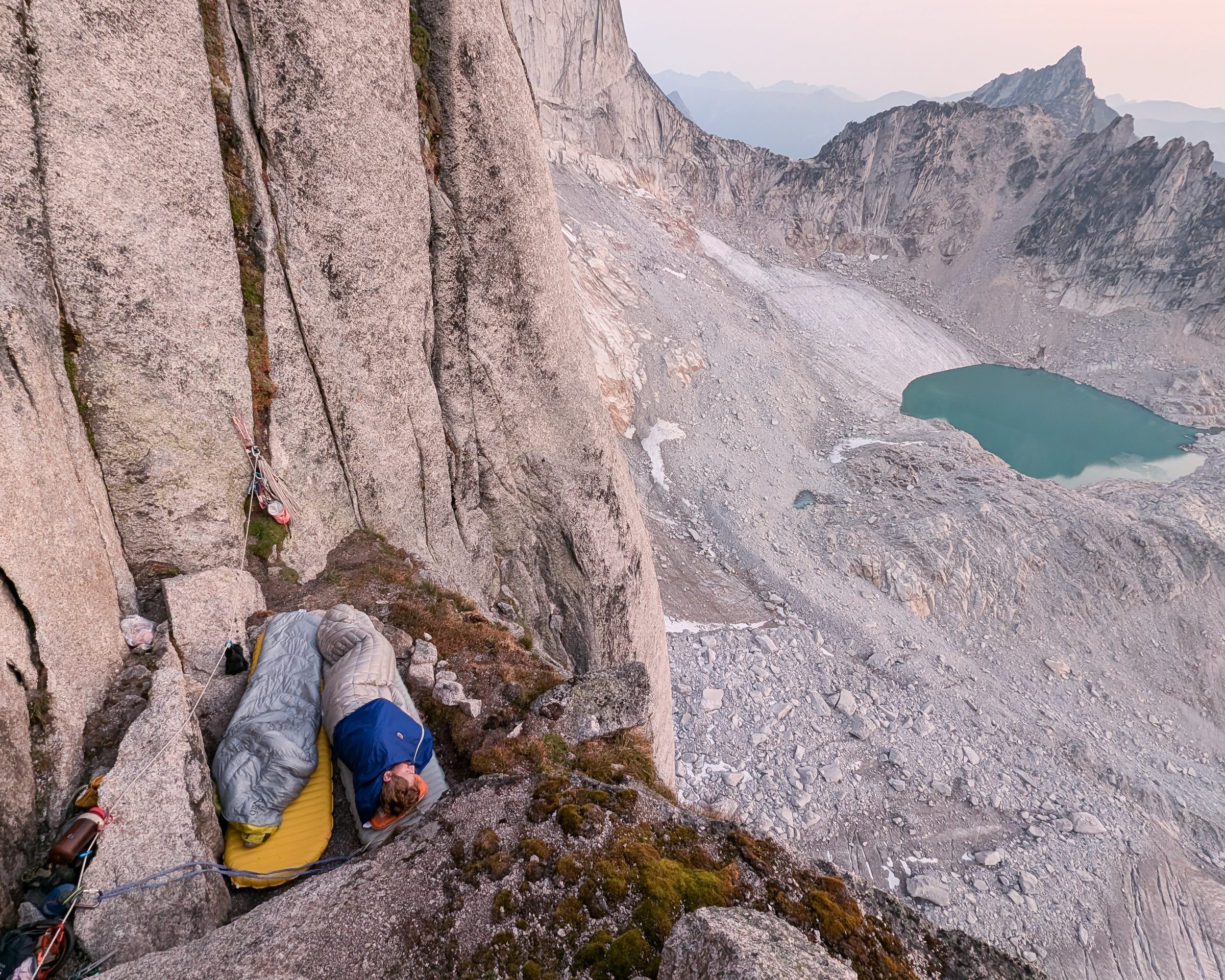
Basics
The Therm-a-Rest NeoAir XLite NXT is a featherlight mummy-style sleeping pad, available in four sizes to best suit your length and width needs. The insulated regular XLite, which Climbing tested, weighs 13oz (370g), has an R-value of 4.5, and is three inches thick.
Our thoughts
The NeoAir XLite NXT—while a total mouthful to say—has become our editors’ go-to sleeping pad for year-round adventures. At an R-value of 4.5 the pad is insulated enough for winter bivies and snowbound tent sites, yet it lacks the heft of most similarly warm competitors thanks to a proprietary reflective coating called “Thermacapture” which radiates your own heat back to your body for maximum thermal efficiency. Aside from its impressive warmth-to-weight ratio, the XLite also serves up a great sleep: its baffle construction is supportive and sturdy, and its face fabric is mercifully quiet. (No crinkling as you roll in your sleep.) We had no qualms about bringing this pad up summer alpine climbs, across ski-mo traverses, or into the backcountry midwinter. It happily did it all.
Buy for $200-$240 on cascadedesigns.com
Therm-a-Rest Z Lite SOL
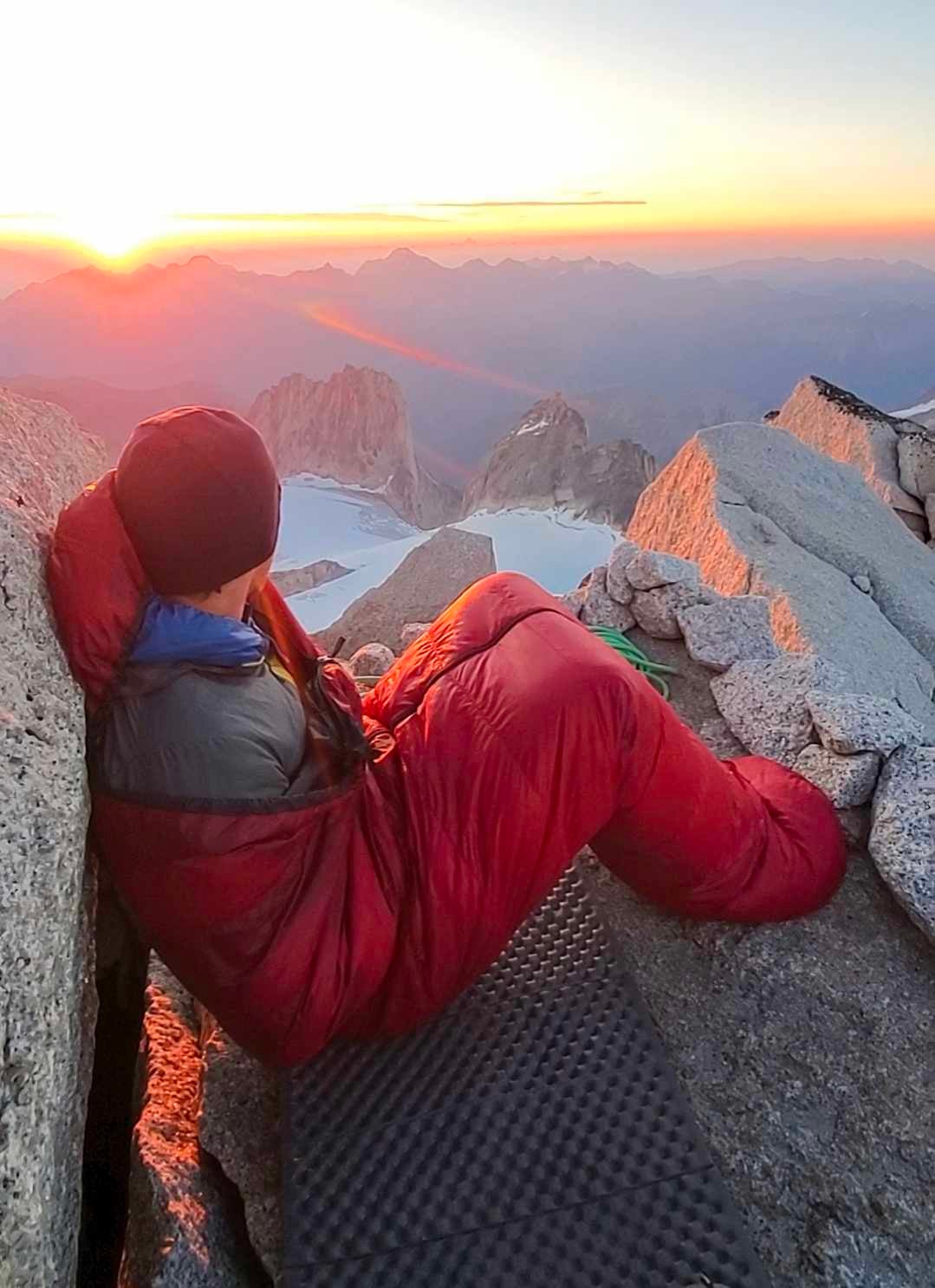
Basics
The Therm-a-Rest Z Lite SOL is a simple and affordable closed-cell summer sleeping pad. It has an R-value of 2.0, weighs 14oz (410g), and comes in two lengths.
Our thoughts
The Z Lite SOL is a favorite among fast-and-light rock climbers and hardcore winter alpinists alike. Though it isn’t the most plush sleeping pad around, nor the warmest, its close-cell structure has one undeniable benefit: it cannot be punctured. (A second benefit: it’s cheap!) If you tend to sleep in rocky areas where popping your pad is a real concern, the Z Lite SOL lays those concerns to rest—and can be used as a first layer to protect a blow-up mat, too.
Buy for $49-$59 on cascadedesigns.com
Section dividerSleeping Bags
Therm-a-Rest Parsec 0F/-18C
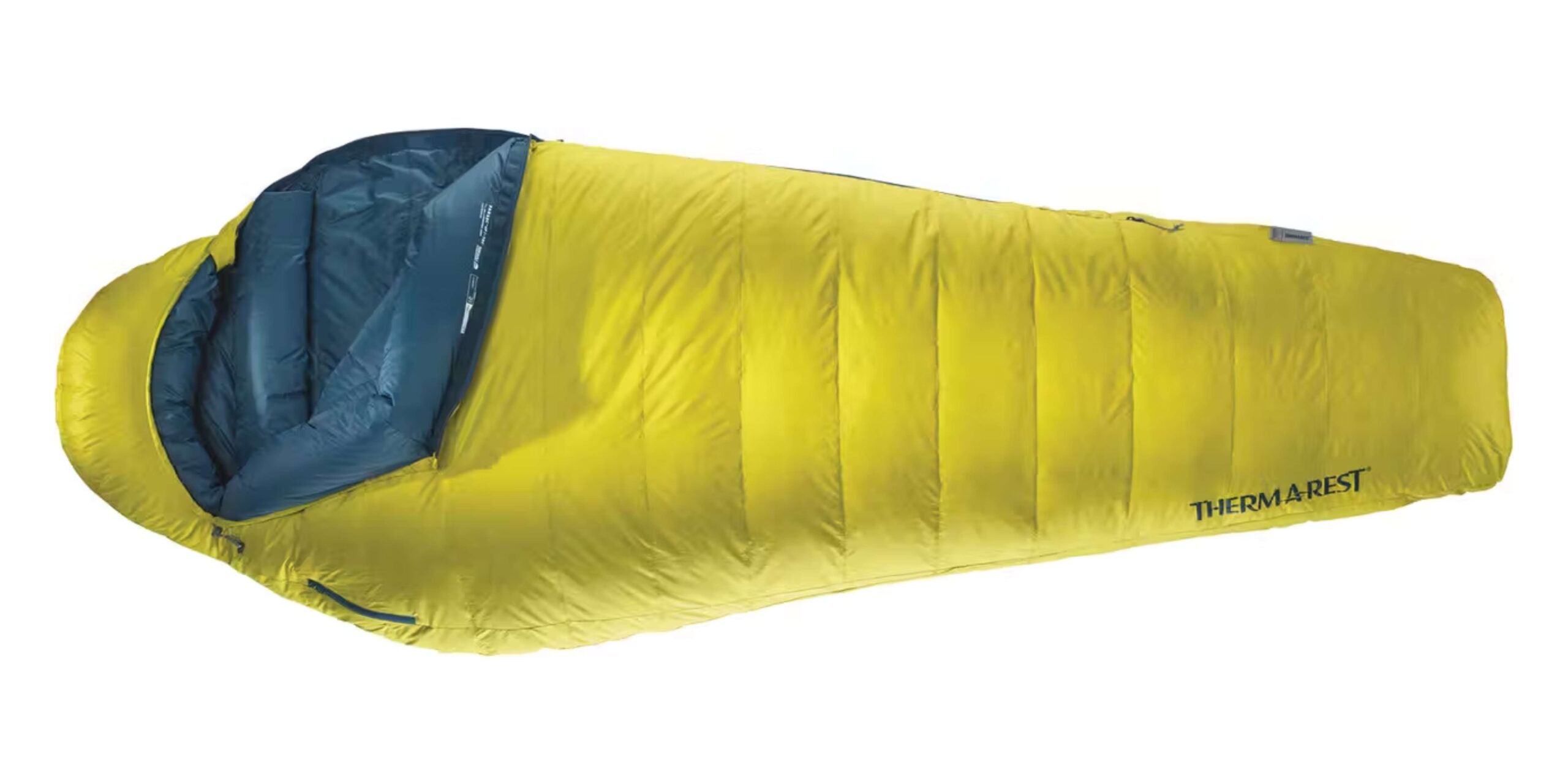
Basics
This bag is stuffed with 800-fill Nikwax Hydrophobic Down; has heat-mapped zone insulation combined with a boxed-baffle construction to optimize weight and warmth; a side-zippered pocket; and removable straps to secure the bag to a pad. It weighs 2.6lbs (1.16kg).
Our thoughts
One reviewer called it “the nicest bag I’ve ever owned.” Filled with a highly compressible Hydrophobic Down, the Parsec absorbs 90 percent less water and dries three times faster than untreated down. On more than one occasion our tester’s bag got wet while camped in a heavy rainstorm, and yet she stayed warm and dry, while her partner, in his lesser bag, did not.
And good news for side sleepers: The bag’s two sets of lightweight, stretchy straps located in the top and bottom halves of the bag securely fix it to your sleeping pad. Roll around all you’d like—this thing is staying put.
Buy for $530 on cascadedesigns.com
Valandre Bloody Mary 5F/-15C
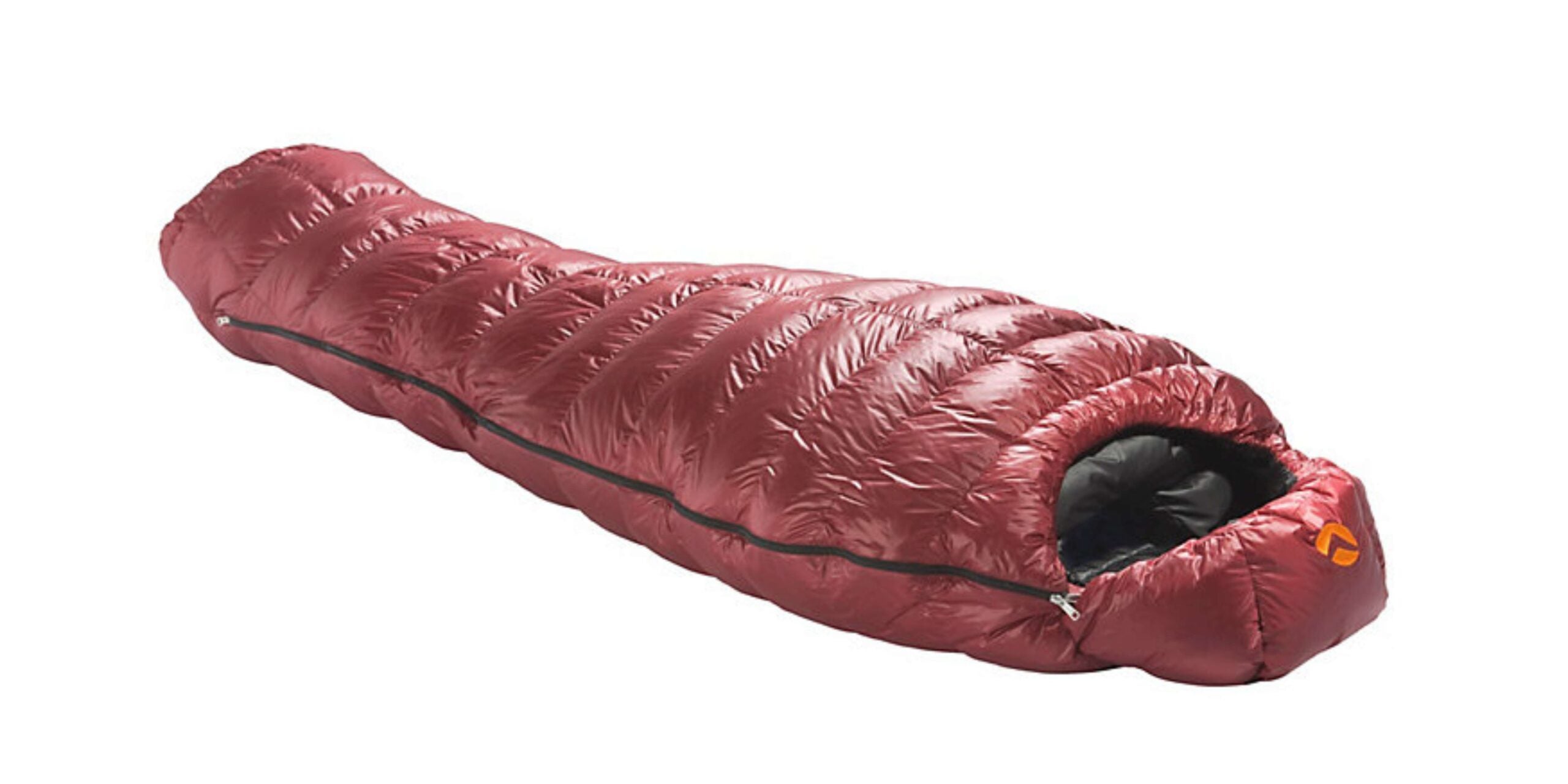
Basics
This bag is stuffed with high-quality 850-fill down; has an interchangeable draft collar; a one-handed hood-and collar-cinch system; zipper interior pocket; and is available in three sizes. It weighs 2.6lbs (1.16kg).
Our thoughts
The Bloody Mary is perhaps one of the most versatile sleeping bags our lead tester has ever owned, thanks to its three choices of draft collar, a full-length zipper, and adjustable mummy hood. If, like him, you tend to adjust and re-adjust throughout the night, you’ve surely felt hard-won warmth escape through your bag’s collar as you flip again onto your shoulder to block out your partner’s chainsaw snores. In the Bloody Mary, its “Marie Antoinette collar” zips into the back of the bag at neck-height and sticks to Velcro on the front, providing a comfortable, neck-wrapping tube of down to eliminate heat loss. For warmer nights, you can swap in a half collar—or, in summer, go with no collar at all. Speaking of which, a head-to-toe zipper provides much-needed ventilation for warm-weather bivies, yet can be quickly zipped up (read: snag-free) and is lined with a generous draft tube once the night wears on, clear and cold.
Rab Mythic 200 34F/1C
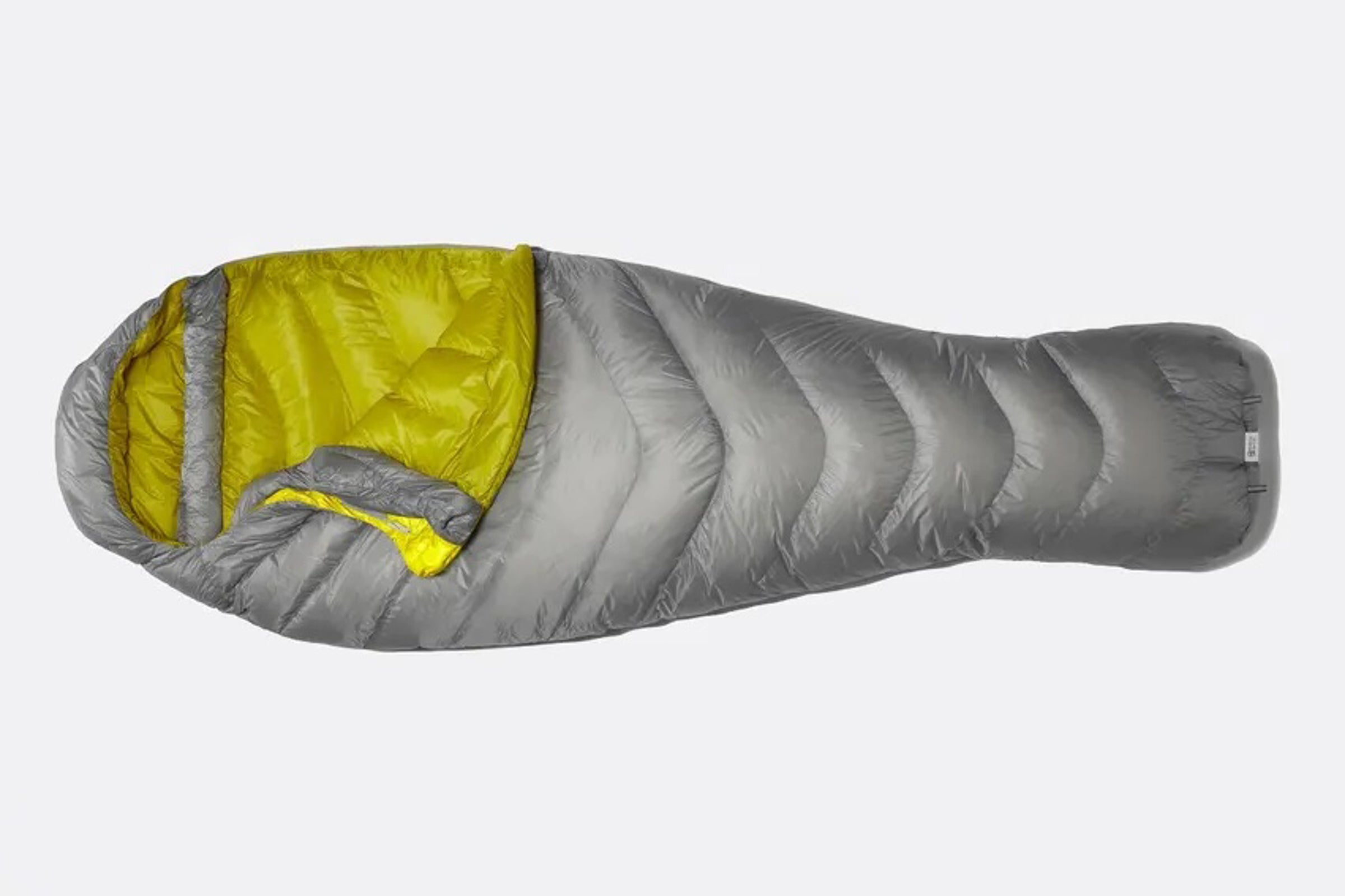
Basics
This super-light bag is filled with high-quality 900-fill down; has a three-quarter-length side zip; a roomy toe box; and a zipped interior pocket. It weighs 18 ounces (515g).
Our thoughts
The Mythic 200 is a simple and ridiculously light no-B.S. bag. Its premium goose down is finished with a hydrophobic treatment to keep moisture at bay, and is sandwiched between a recycled, 10-denier fabric to further cut down on weight. An aggressively tapered fit keeps you warmer by limiting any pockets of cold air from accumulated in the bag and has the added side effect of—you guessed it—further cutting its weight. The Mythic 200 (200 grams of insulation) also comes in 400- and 600-gram iterations for those who want a little more warmth.
Our lead tester loved this bag for its plush comfort, efficient design, and negligible weight. He was also pleasantly surprised with its durability. Though the Mythic 200 doesn’t have the burliest face fabric ever, he did open-bivouac in it multiple times (Patagonia, Bugaboos, Canadian Rockies) and has not yet incurred any scuffs or holes.
Section dividerFood
Good To-Go
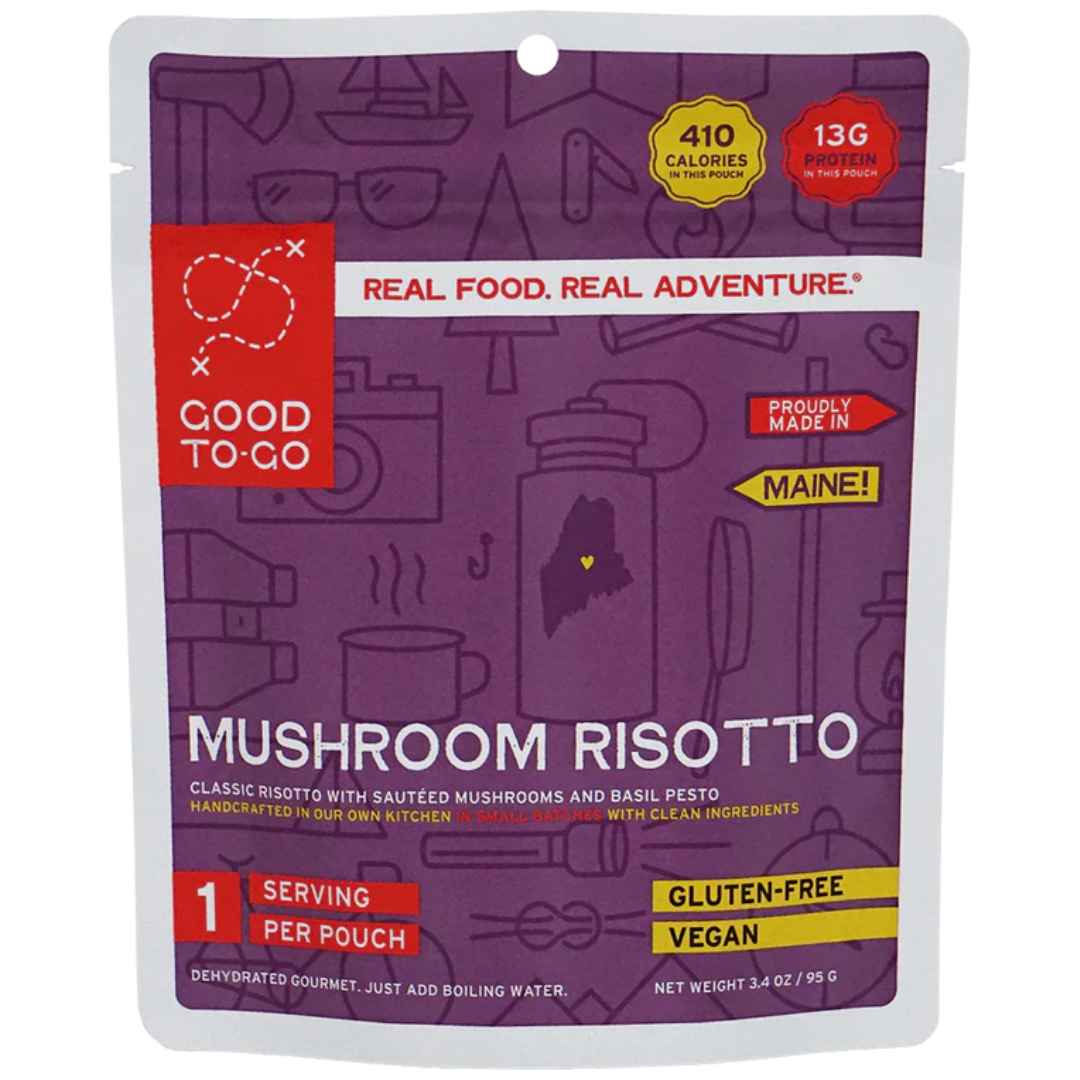
Basics
Good To-Go’s dehydrated meals are flavorful, lightweight, and nourishing, with easy-to-pronounce ingredients. All of their meals are gluten-free and are primarily vegan and vegetarian. The meals have a maximum five-year lifespan, are packaged in a durable plastic bag, and require boiling water to prepare.
Our thoughts
Good To-Go is a worthy option for overnight climbers and campers who want to eat real food with a finite lifespan. The company’s celebrated chefs are on display at each meal, with offerings ranging from spicy Korean bibimbap to hearty Mexican quinoa bowls (a favorite is the new “breakfast hash” with butternut squash, feta, and rosemary), providing 13 different entrées that accommodate a range of ethnicities, taste preferences, and dietary restrictions.
Buy for $7-$15 on good-togo.com
Backpacker’s Pantry
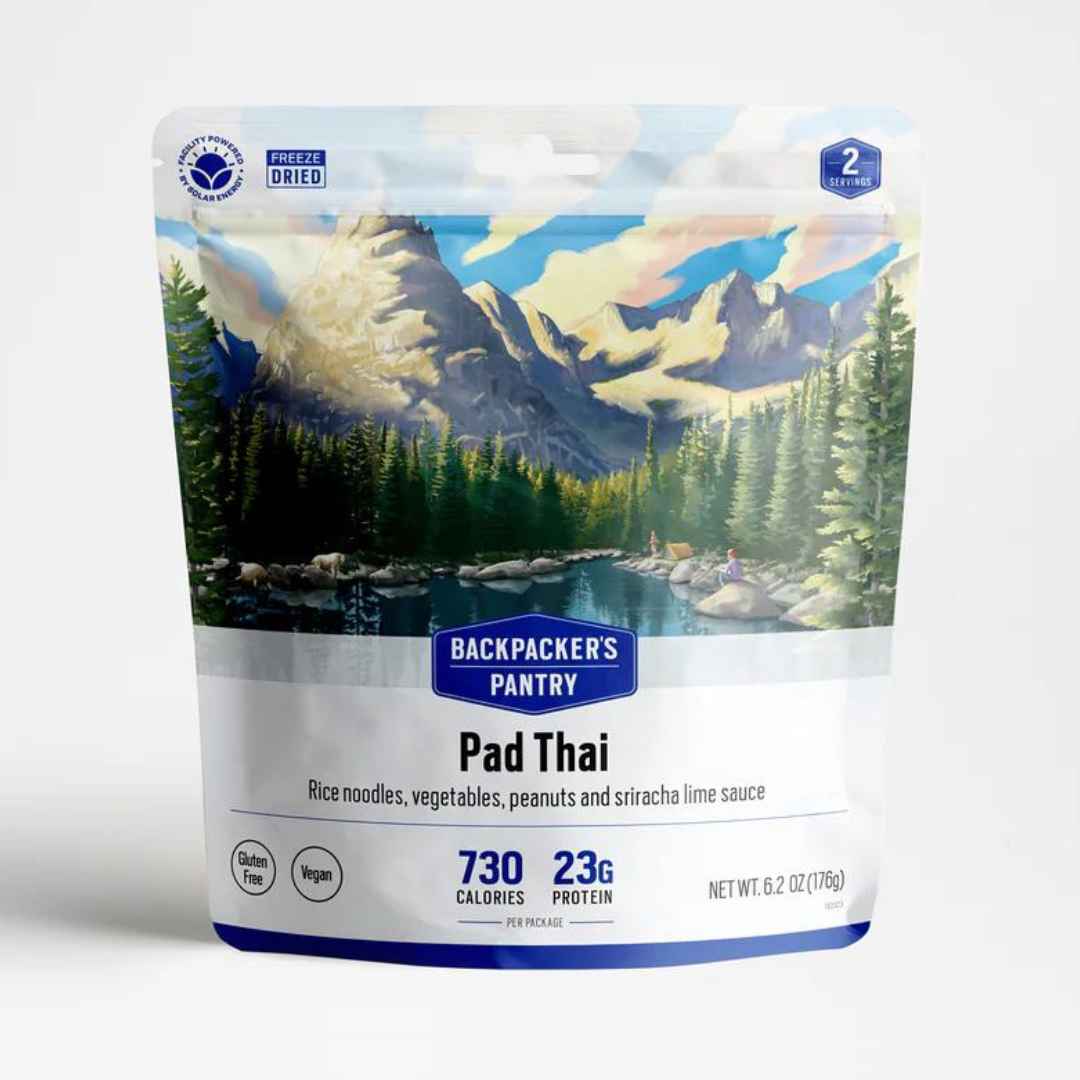
Basics
Backpacker’s Pantry is a cornerstone of the just-add-water food industry, and for good reason: they’ve been making lightweight camping food since the ‘50s. Their offerings have evolved to serve most any diet—whether you’re vegan or soy-free—and have a respectable calorie-to-weight ratio.
Our Thoughts
Backpacker’s Pantry has a long menu (44 at last count), making it a great one-stop-shop when purchasing meals for a big group or a long trip. We loved digging into the Pad Thai and Blueberry Peach Crisp after a long day of climbing—any meal that serves real peanut butter and sriracha-lime flavors followed up with sweet summer fruits is slam dunk, in our books.
Buy for $5-$13 on backpackerspantry.com
Mountain House

Basics
Mountain House serves up freeze-dried meals with the longest shelf-life in the industry (30 years!). They prioritize simple, comfort-oriented recipes that are easy to digest and packed with protein.
Our thoughts
Mountain House meals are yet another worthy freeze-dried option for climbers wary of extra weight in their packs. We loved tucking into the Chicken Noodle Casserole at high camps: homestyle comfort food that was easy to digest. The standout feature of Mountain House meals, however, is the sheer amount of protein jammed into every meal. On hard, multi-day climbs, our testers would previously supplement their meals with protein powder to ensure their muscles could pull hard the next day. Now, with the Chicken Noodle Casserole, 43 grams of protein is served up in a far tastier manner.
Buy for $10-$15 on mountainhouse.com
Section dividerStoves
MSR WindBurner Group Stove System
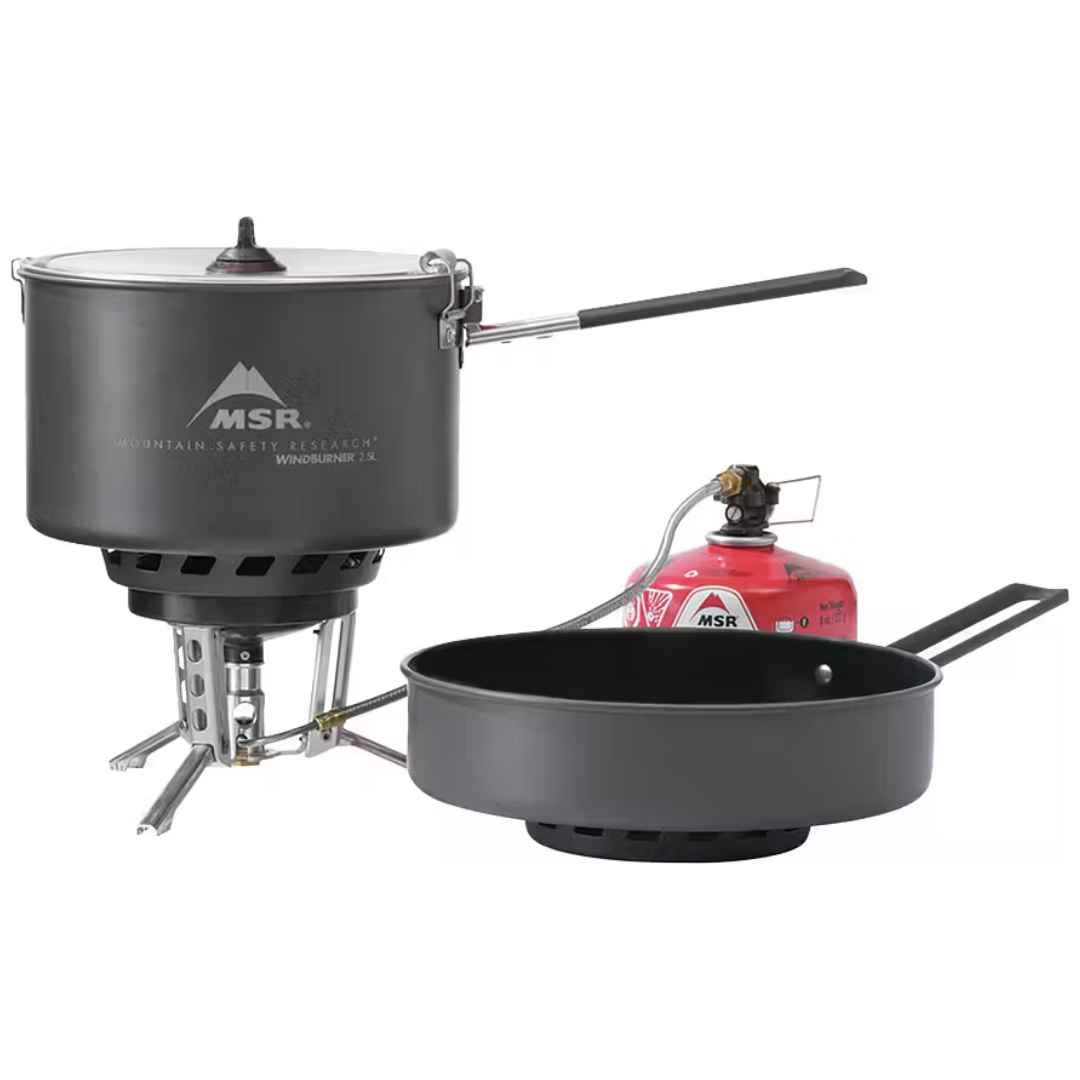
Our thoughts
Designed for climbers seeking a life beyond freeze-dried chili mac, the WindBurner Group Stove System is our go-to for real meals in the hills. The spacious 2.5-liter pot served up peanut noodles for three on a fall overnight in Moab, Utah, and even when 45-mph winds knocked over our tent (yikes!), the windproof burner never wavered. A precise simmer control sautées veggies to perfection, and the non-stick ceramic coating prevents gunk from building up, which makes for easy cleaning. It may seem a little clunky at first, but the entire 1.3lb (590g) system nests together neatly, with room left for an 8-ounce fuel canister, utensils, and a dish rag.
Buy for $250 on cascadedesigns.com
GSI Outdoors Glacier Camp
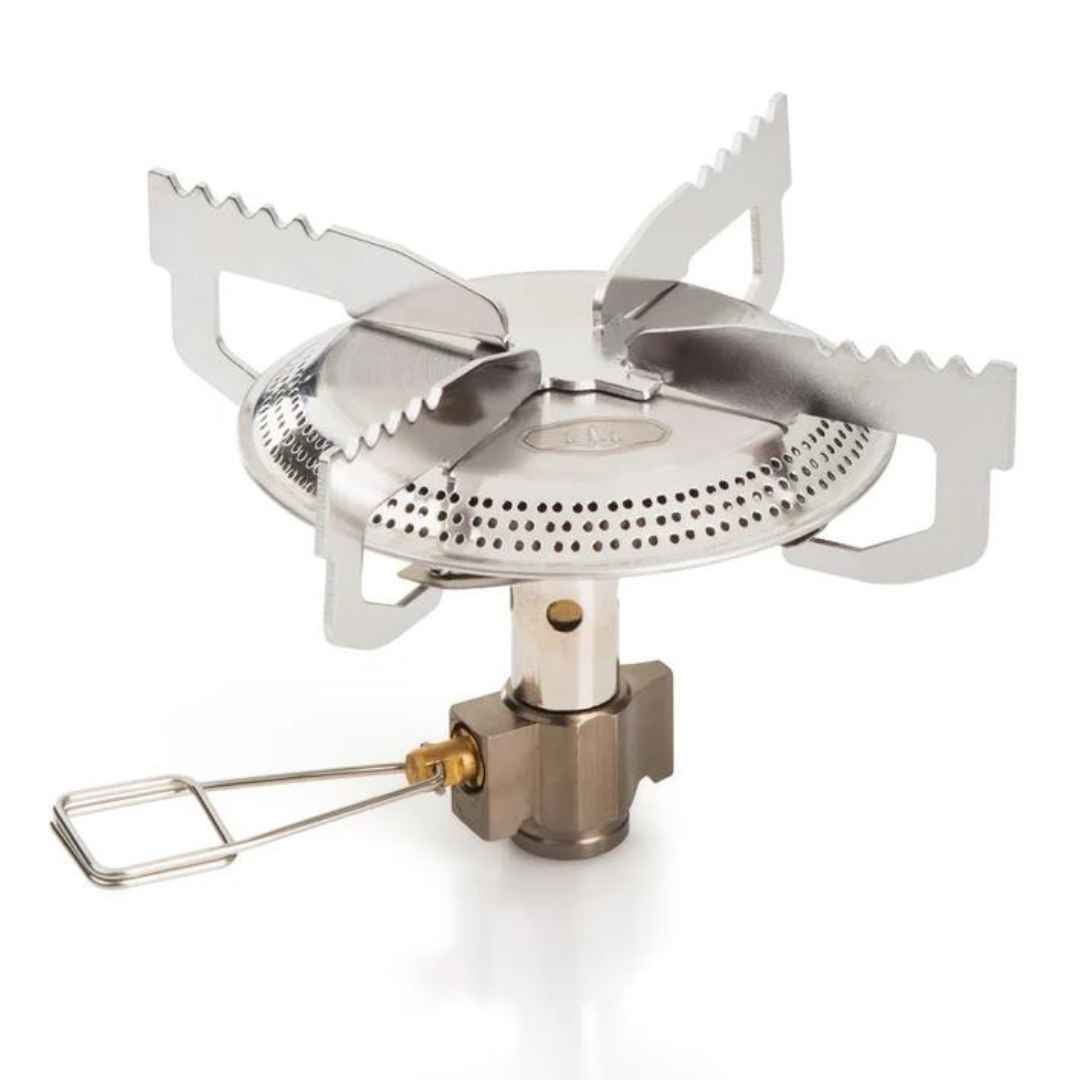
Our thoughts
Bargain-priced gear is not always a good buy, but the Glacier Camp cuts the right corners. Its 4.9-inch-wide arms support a 3-liter pot, and it maintained a consistent flame at 10,600 feet in Colorado’s Tenmile Range. The design, however, is fussy. “You have to twist and remove the arms from the burner head for storage—but doing so doesn’t help it pack much smaller,” one tester says. Further tradeoffs for the price? The Glacier Camp doesn’t hold a flame well unless it’s fully cranked, and it lacks wind protection and a piezo.
Buy for $30 on gsioutdoors.com
MSR WhisperLite Universal
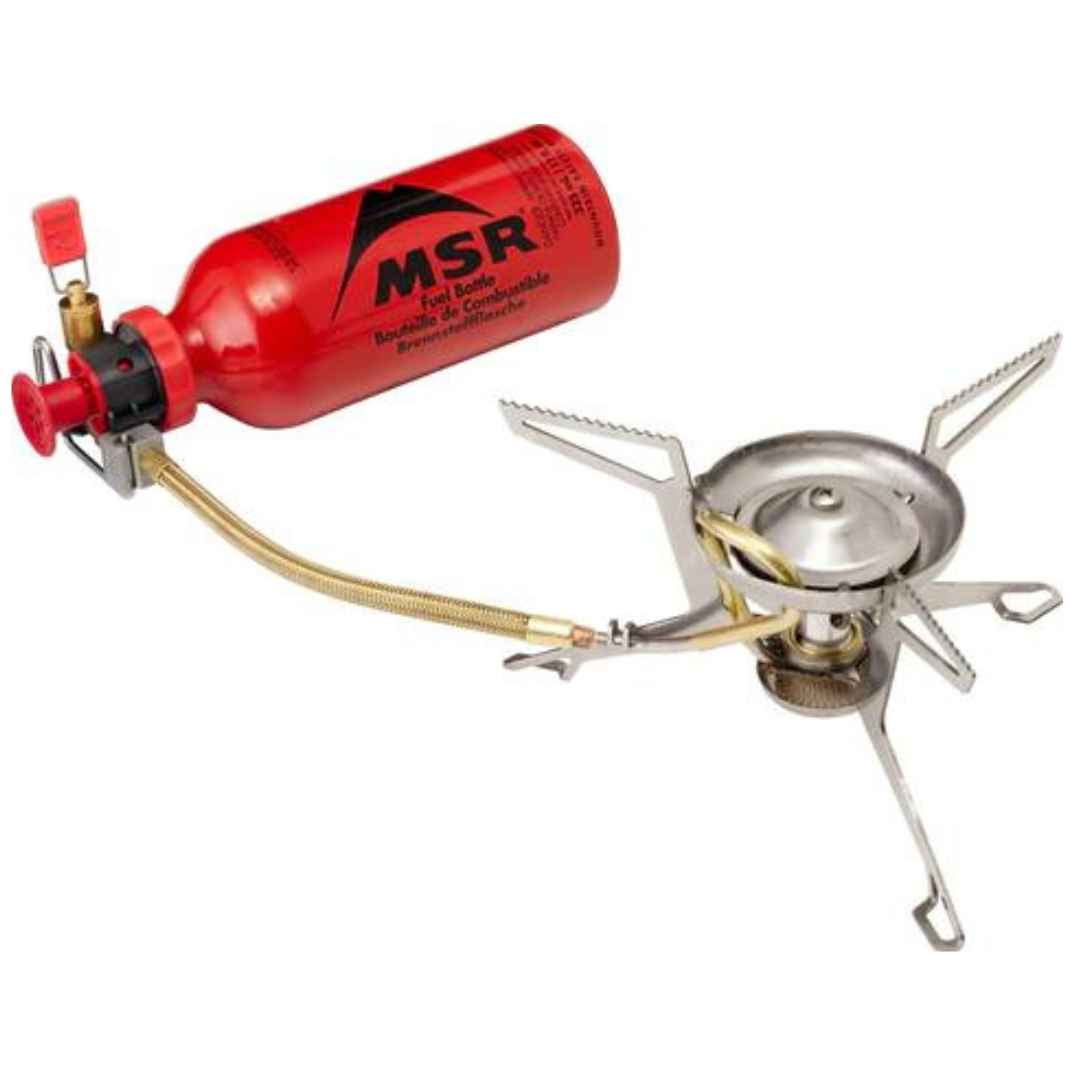
Our thoughts
Want a stove that can do anything—that can handle cold temps as well as warmer ones? The MSR WhisperLite Universal is a liquid-fuel stove that can also take standard canisters. It’s extremely stable, which is a plus when you’re cooking in the snow, and it can boil a liter of water in a little less than seven minutes in the winter. It’s not especially light at 11.2 oz (317g), but it’s reliable enough to shine in subzero conditions and at altitude. Bonus: In addition to standard white gas, it can burn kerosene or unleaded gasoline, which makes it a smart choice for trips to remote areas where gear shops can’t be found.
Buy for $200 on cascadedesigns.com
MSR Windburner
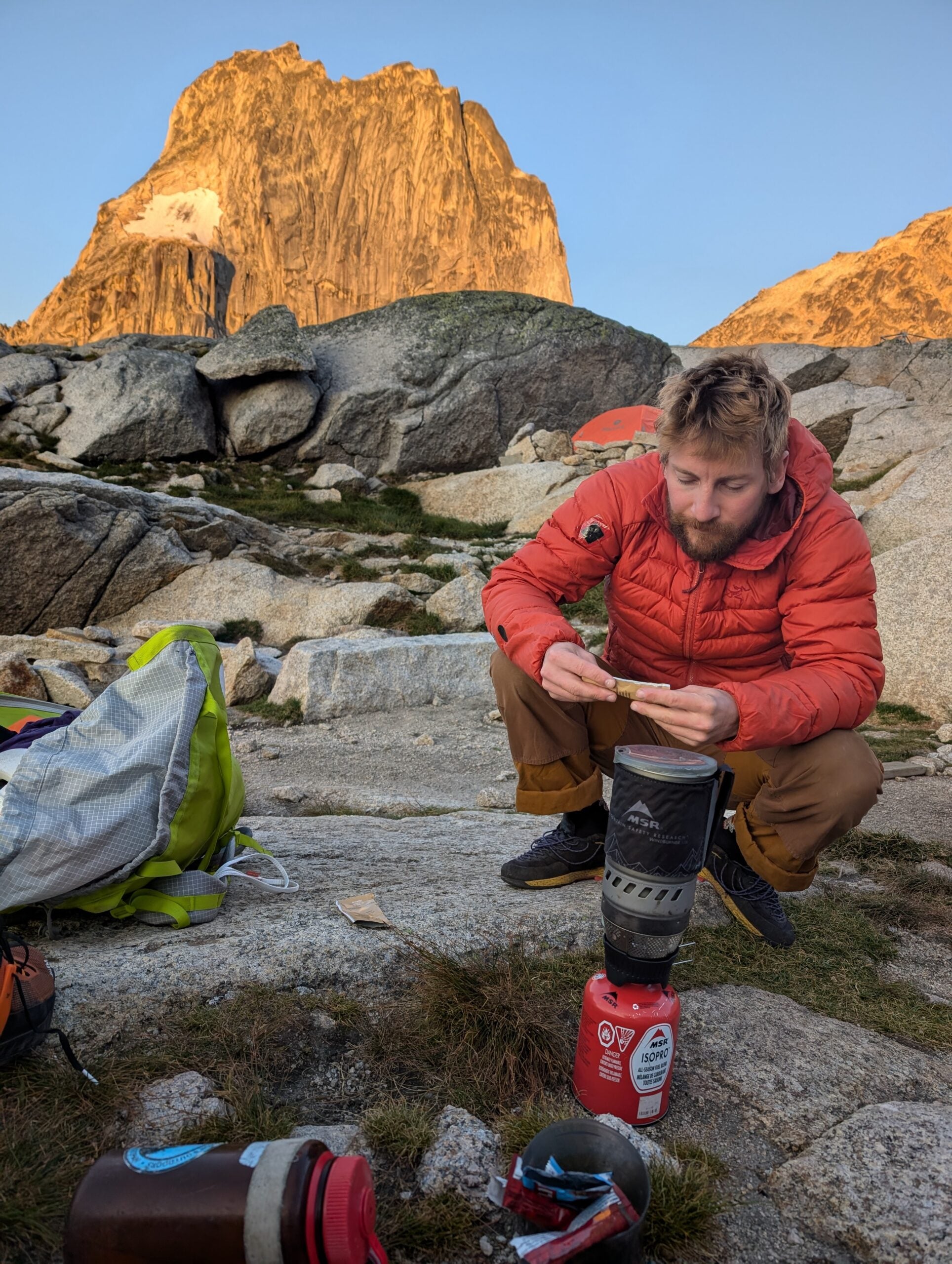
Our thoughts
Like MSR’s beloved Reactor, the Windburner is an extremely efficient stove that has some of the best wind protection we’ve ever experienced. Once the stove is lit, the pot (one or 1.8 liters) can be locked in place to further protect you from culinary disaster. This clever locking mechanism is invaluable when the stove is hanging in a portaledge, but also when moving fast/staving off the cold in the mountains. Thanks to a fabric cozy wrapping the pot, we have literally held the stove in our hands—while it melted snow to water—while trudging through remote valleys in winter.
Buy for $190 on caseadedesigns.com
Bonus: FlipFuel Transfer Device
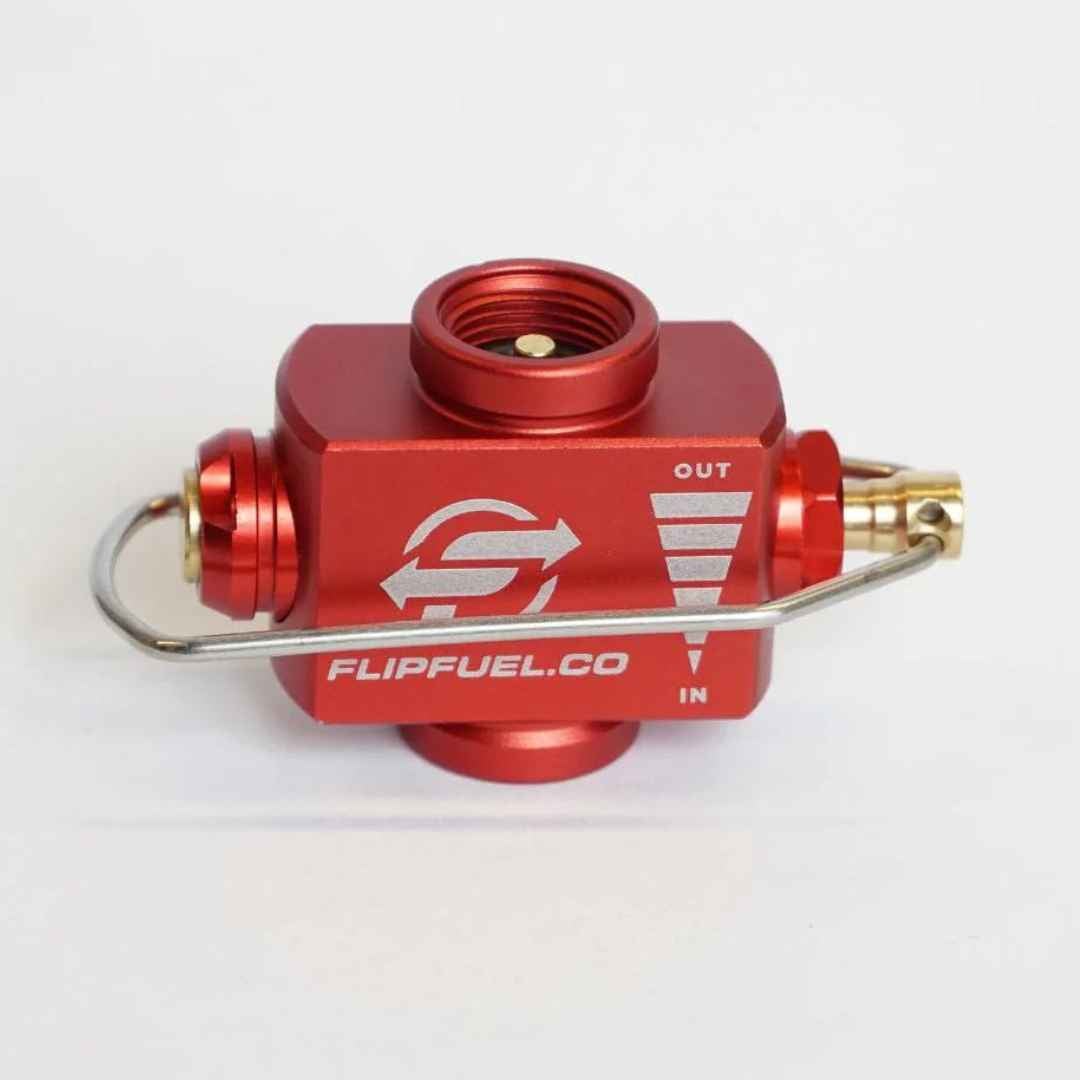
Our thoughts
The FlipFuel solves a problem that overnight climbers will know all too well: having a surplus of half-empty fuel canisters and being forced to carry multiple of them into your climbing objective. Using the power of temperature differentials, the FlipFuel easily transfers unused fuel from one isobutane canister into another, ensuring that you are carrying exactly the amount of fuel you need—and not a gram more. This little device is a real MVP.
